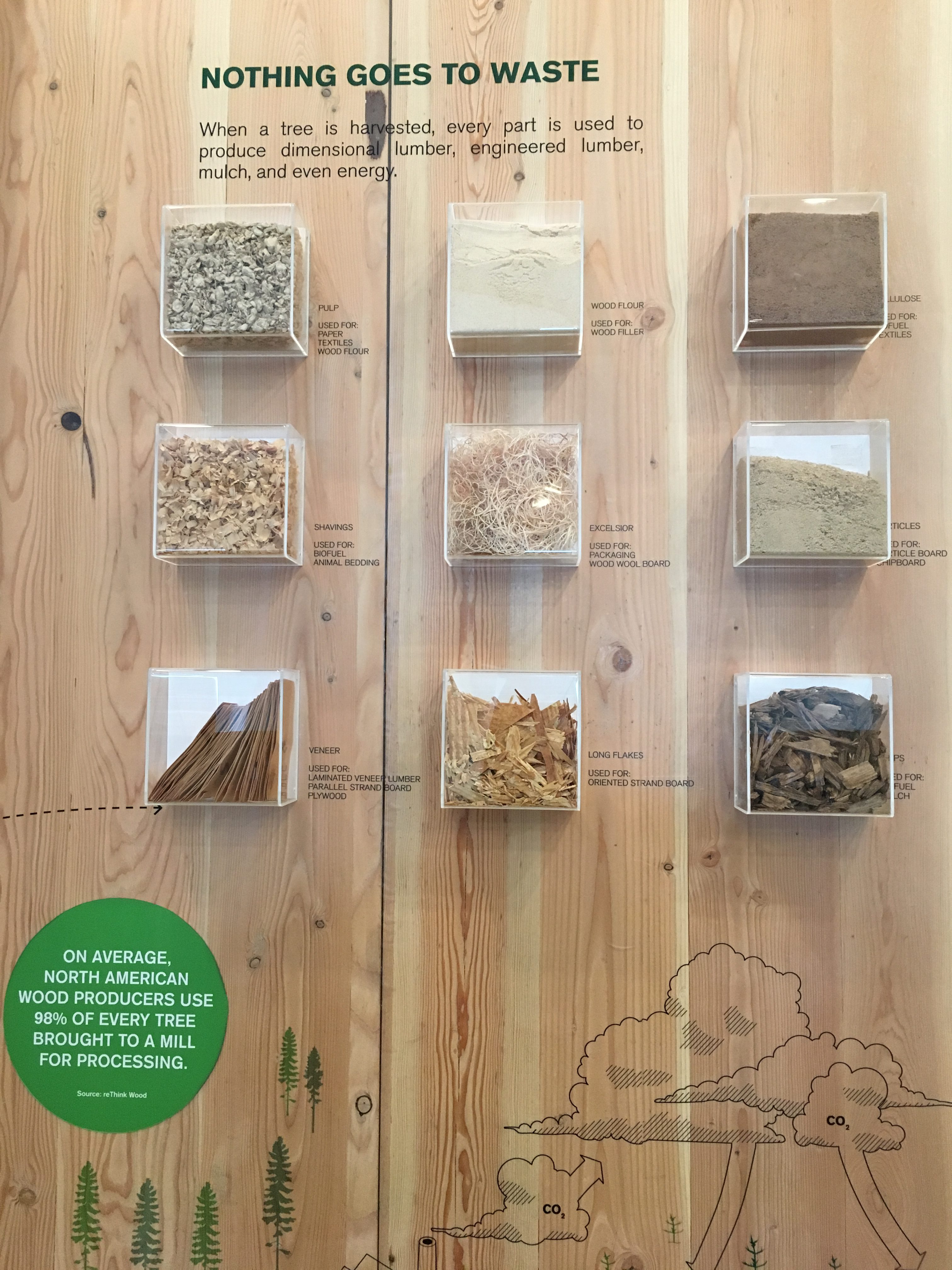Wood Buildings on the Rise in the U.S.
By Cristina Davia
Architects increasingly are using wood as an alternative to concrete, steel and glass to reduce the carbon footprint of buildings. New wood technologies allow developers to use shorter, less expensive segments of lumber to build structures taller than the traditional single-family home.
Besides the tangible benefits of structural strength and flexibility, cost savings and speed of construction, wood has intangible characteristics that steel and glass do not: wood invokes warm feelings of home while steel and glass give off a modern, colder vibe.
Uses for new wood technologies are nearly endless, and many organizations are testing new wood applications daily, including this test by WoodWorks to show how cross-laminated timber holds up under blast testing.
The US Forest Service (USFS) is teaming with the Softwood Lumber Board and Nixon Peabody LLP to sponsor Timber City, an exhibit about wood technologies, to bring knowledge of the benefits of wood construction to the public. The exhibit will run through May 21, 2017 at the National Building Museum in Washington, D.C.
Types of Wood Technology

A display at Timber City depicts the different types of wood technology (Cristina Davia / Smart Growth Online)
Timber City highlights the use of cross-laminated timber (CLT) in building construction. The exhibit also shows samples of other engineered wood products, such as glue-laminated timber (also known as glulam), nail-laminated timber and parallel strand lumber. These technologies, known collectively as mass timber, allow for taller wood buildings because they enable manufacturers to engineer smaller pieces of wood into larger panels of wood for maximal strength.
In 2015, the U.S. Department of Agriculture held the Tall Wood Building Prize Competition. While the two winning proposals – Framework in Portland, Oregon, and 475 West 18th in New York City –took different approaches, both projects met the competition’s goal of showcasing the safe application, practicality and sustainability of constructing a minimum 80-foot structure that uses lumber, composite wood technologies and innovative building techniques.
At 12 stories, Framework will be constructed primarily of cross-laminated timber. The mixed-use building will house ground-level retail, office, workforce housing and community space. The main community space will include a Tall Wood Exhibit, featuring displays showing the public how the building was designed and constructed. In addition to serving its designed purpose, Framework demonstrates how tall timber buildings can be viable in an urban environment, while advancing Oregon’s economic development goals by utilizing local timber.
Located in the West Chelsea neighborhood of Manhattan adjacent to the High Line, 475 West 18th will be a 10-story apartment building with ground-floor retail. Construction materials will be renewable and locally sourced, providing for a low-carbon and more economically-sound project. The building’s extensive use of wood structural elements and other lumber products, paired with energy efficient building systems, led the project team to estimate that overall energy consumption will be reduced by at least 50 percent relative to conventional construction. Moreover, 475 West 18th will be the first building in New York City to use modern mass timber building systems and will be the tallest building in the city to use cross-laminated timber.
Other developers are helping to set the trend.
The tallest modern wood building in the U.S. opened in late 2016 in Minneapolis. The seven-story, 220,000-square foot office building named T3 (short for “Timber Transit Technology”) “delivers the warmth and authenticity of a brick and timber building, with all the benefits of new construction,” according to the T3 website.
T3 is LEED certified and was constructed with young trees to promote sustainable forestry practices. Construction of the building included glue-laminated timber beams and columns, with a combination of nail-laminated timber and concrete for floors.
Why Build With Timber?
Wood construction promises to become more common as developers see the benefits. Timber offers advantages in terms of material, construction and environmental costs. Wood also costs less in money and construction time, with fewer environmental impacts.
Sustainability

Timber City exhibit shows that no part of a tree goes to waste (Cristina Davia / Smart Growth Online)
Timber is a renewable, single-source material. Steel and concrete require significantly more fossil fuel in the manufacturing process, according to Timber City. Also, North American wood producers, on average, use 98 percent of every tree brought to a mill for processing, so very little wood material goes to waste. With new wood technologies, even timber damaged by disease or fire can be used in construction.
Wood performs also better than concrete and steel in terms of embodied energy, air and water pollution, and the amount of carbon footprint generated.
Strength & Flexibility
Timber is lighter and more durable than steel or concrete. Timber has minimal expansion and contraction, and it can bend. Contrary to common perception, wood holds up better to fire than steel does. Timber does not ignite until it reaches 480 degrees Fahrenheit, and even then it develops a protective char layer that slows further burning. Large timber beams have better fire resistance than steel beams of similar size, because timber’s interior remains much cooler than steel under similar conditions, according to Timber City. Once steel reaches a certain temperature, it retains very little strength, whereas wood has a more gradual decline in strength in a fire.
Cost Savings
Wood is typically less expensive than steel or concrete and can be locally sourced, supporting local economic activity and jobs. Wood construction is faster, especially when prefabricated materials are used, reducing construction costs. Speed of construction and cost savings are also beneficial after natural disasters.
For these and other reasons, timber advocates anticipate the wood construction trend to continue.


